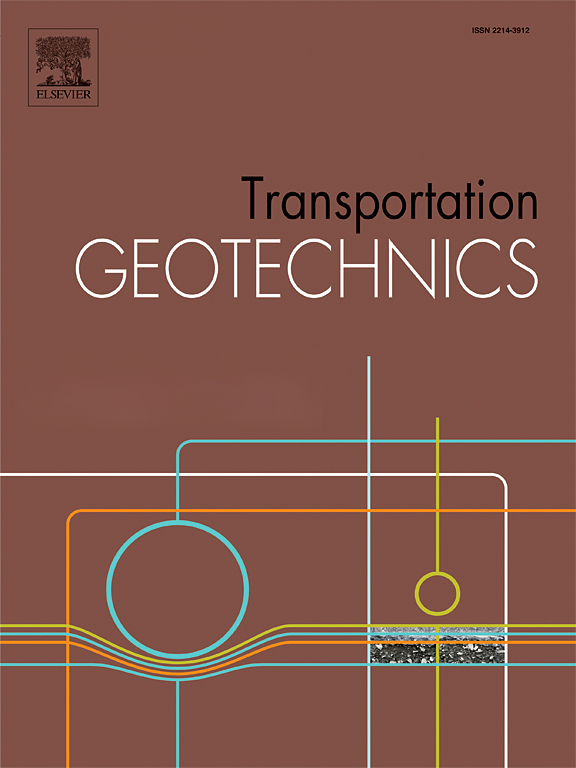用于有机土壤稳定的绿色粘结剂的生命周期评估
IF 4.9
2区 工程技术
Q1 ENGINEERING, CIVIL
引用次数: 0
摘要
在承载力较低的土壤上进行越来越多的施工,是世界上一些地区目前面临的岩土工程挑战。高压缩性有机土壤需要干预以改善其机械性能。在这种情况下,使用粘结剂稳定土体是一种适用的技术,但所使用的商业水泥(普通硅酸盐水泥)会对环境造成影响,而使用环保型粘结剂可以最大限度地减少这种影响。混合粘结剂可以使用工业中的二次材料(废料或副产品),促进环境效益。在这种情况下,本研究建议使用电石灰和粒化高炉矿渣,并辅以硅酸盐水泥来稳定有机土壤。研究分析了混合粘合剂与硅酸盐水泥在稳定土壤方面的强度对比。还进行了生命周期评估,以验证拟议的混合粘合剂在替代传统水泥时是否具有环境效益。结果表明,与商用水泥相比,混合粘结剂具有类似的稳定有机粘土的能力。生命周期分析表明,在混合粘结剂的成分中使用工业二次材料,可显著减少对环境的影响。本文章由计算机程序翻译,如有差异,请以英文原文为准。
Life cycle assessment of green binder for organic soil stabilization
Increasing construction on soils with low bearing capacity is a geotechnical challenge currently faced in several parts of the world. Highly compressible organic soils require intervention to improve their mechanical behavior. In this case, mass stabilization with binder is an applicable technique, however the commercial cement used (Ordinary Portland Cement) generates environmental impacts that can be minimized with its replacement by environmentally friendly binders. Blended binders can use secondary materials from the industry (waste or by-products) and promote environmental gains. In this case, this research proposes the use of carbide lime and granulated blast furnace slag with the complement of Portland cement for the stabilization of an organic soil. A comparison of the strength obtained with the blended binder versus Portland cement is analyzed in soil stabilization. A Life Cycle Assessment is performed to verify if the proposed blended binder has environmental benefits in replacing conventional cement. Results show that the blended binder has similar capacity to stabilize the organic clay soil compared to commercial cement. The life cycle analysis showed that the use of secondary materials from industry in the composition of blended binder promotes a significant reduction in environmental impacts assessed.
求助全文
通过发布文献求助,成功后即可免费获取论文全文。
去求助
来源期刊

Transportation Geotechnics
Social Sciences-Transportation
CiteScore
8.10
自引率
11.30%
发文量
194
审稿时长
51 days
期刊介绍:
Transportation Geotechnics is a journal dedicated to publishing high-quality, theoretical, and applied papers that cover all facets of geotechnics for transportation infrastructure such as roads, highways, railways, underground railways, airfields, and waterways. The journal places a special emphasis on case studies that present original work relevant to the sustainable construction of transportation infrastructure. The scope of topics it addresses includes the geotechnical properties of geomaterials for sustainable and rational design and construction, the behavior of compacted and stabilized geomaterials, the use of geosynthetics and reinforcement in constructed layers and interlayers, ground improvement and slope stability for transportation infrastructures, compaction technology and management, maintenance technology, the impact of climate, embankments for highways and high-speed trains, transition zones, dredging, underwater geotechnics for infrastructure purposes, and the modeling of multi-layered structures and supporting ground under dynamic and repeated loads.
 求助内容:
求助内容: 应助结果提醒方式:
应助结果提醒方式:


